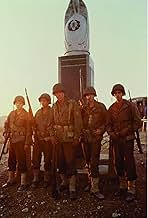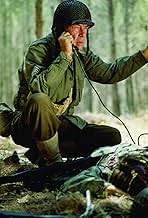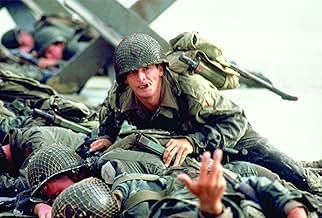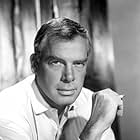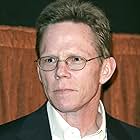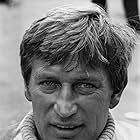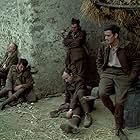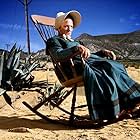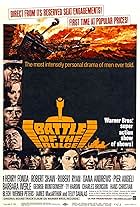A hardened sergeant and the four core members of his infantry unit try to survive World War II as they move from battle to battle throughout Europe.A hardened sergeant and the four core members of his infantry unit try to survive World War II as they move from battle to battle throughout Europe.A hardened sergeant and the four core members of his infantry unit try to survive World War II as they move from battle to battle throughout Europe.
- Awards
- 2 wins & 2 nominations
Stéphane Audran
- Underground Walloon Fighter at Asylum
- (as Stephane Audran)
- Director
- Writer
- All cast & crew
- Production, box office & more at IMDbPro
Storyline
Did you know
- TriviaThe bulk of the picture was shot in Israel, and director Samuel Fuller remarked that it was unsettling after a scene was shot when the German soldiers and SS troops would take off their helmets and Fuller would see them wearing yarmulkes; also, between takes they would be sitting around the set in full Nazi uniform speaking Hebrew or reading the Torah.
- GoofsDuring the WW1 scene between the Sergeant and the officer in the dug-out, the Sergeant learns that the armistice had been signed 4 hours previously at 1100hrs, November 11, 1918. While talking with the officer, the sergeant is cutting a piece of red cloth in the shape of a number '1' which he says he will submit as a proposed insignia for the division. However the shoulder sleeve insignia for the 1st Division consisting of a red number "1" was already approved on 31 Oct 1918.
- Quotes
[the troop stops before a memorial]
Johnson: Would you look at how fast they put the names of all our guys who got killed?
The Sergeant: That's a World War One memorial.
Johnson: But the name's are the same.
The Sergeant: They always are.
- Alternate versionsIn 2004, film critic Richard Schickel restored this film to a new director's cut length of approximately 160 minutes. Using Samuel Fuller's production notes and the full-length, unexpurgated script, Schickel restored the footage that was forced to be cut by the studio upon its original 1980 release (which runs 116 minutes). The restored version's DVD release date is 3 May 2005. This longer, epic-length version is closer to Fuller's original vision for the film.
- ConnectionsFeatured in A tout coeur: Episode dated 7 May 1984 (1984)
- SoundtracksHorst-Wessel-Lied
Written by Horst Wessel
Featured review
Less than 5 years after the Vietnam War officially ended, Director and acclaimed (but aged) film writer Sam Fuller attempted to recount the experiences he encountered while serving as an infantry soldier in the European Theatre of WW2. He had written many war scripts in his day, but fully realized that the world would not be ready for the true story of WW2, (He is quoted infamously as saying that a truly realistic war picture would involve live grenades and machine guns in the theatre). As his career ended and the world changed, he decided to make a go of his life long pet project... to make a film about the REAL story of WW2, about his own experiences in the Big Red One, or The First Infantry Division.
Too ahead of it's time to be appreciated during it's birth, and too dated to be appreciated in hindsight.
Some of the other user comments suggest this film is inferior to modern war films. Of course this film is not at the caliber of Saving Private Ryan or Band of Brothers in it's war scenes. How could it? When it is of a time closer to The Green Berets (John Wayne wins The Vietnam War) then to anything that came after it. Infact I would go as far as to say that this film broke the first ground, and made films like Platoon, Hamburger Hill, and Full Metal Jacket socially acceptable, and paved the way for films like Saving Private Ryan. Sure, Apocalypse Now has better War scenes, but is so fictional in it's scripting and "epic" war moments that it missed the point of the soldier on the front (and is widely regarded as being unrealistic by Vietnam Vets). The Big Red One tells the story from a WW2 Vet's point of view, Sam Fuller, and is wonderfully acted by a WW2 vet, Lee Marvin. Perhaps the last film to have such credits.
Sure, The Big Red One is cheesy, and harkens to a time when war films were more about the characters, then the violence. Still, there is something charming about the scripting, and Lee Marvin holds the movie together, while being surrounded by actors who were trendy on the cheap for 1979. The film also has technical inaccuracy, as in the Sherman tanks used as Panzers. However, the real strength of the film is in the script, and not in the battles. It breaks ground in it's defiance of films like the Sands of Iwa Jima. The soldier is not a clean sterile fighter for the holiest do goodynest army of all time, he is a human being locked in a battle for survival, and most importantly, he hasn't lost his sense of humor, or his libido.
Regardless of it's dated, almost 70's TV movie feel, I must mention that this film was first to show D-Day in a light other than that cast by The Longest Day, and uses some very clever cinematography to illustrate the violence. Sam Fuller consciously decided to make the battles less violent, and choose to focus on the characters instead, depicted the main characters as cynical and the fallen as humorous tragically short lived figures. This film also was first to introduce words like "replacement", "non-Coms" and "Krouts" to the war movie dictionary. It has the entire bangalore scene from Saving Private Ryan (although merely a concept compared to SPR) and shows North Africa, Italy, France, Germany, and a concentration camp. Before this film, WW2 was only depicted in such an epic manor that Bible films are seemingly tame.
THE BOTTOM LINE: This film was one of the last war pictures to emerge from the dying studio system, and is comparable in the way of battles to The Green Berets, Longest Day, etc. However it shines in the script category. and was first to show soldiers as young clumsy men, and not heroes. It attempts almost too much and that is it's strongest limitation. Still, a must see for war movie fans who can appreciate the older films. 7/10.
Too ahead of it's time to be appreciated during it's birth, and too dated to be appreciated in hindsight.
Some of the other user comments suggest this film is inferior to modern war films. Of course this film is not at the caliber of Saving Private Ryan or Band of Brothers in it's war scenes. How could it? When it is of a time closer to The Green Berets (John Wayne wins The Vietnam War) then to anything that came after it. Infact I would go as far as to say that this film broke the first ground, and made films like Platoon, Hamburger Hill, and Full Metal Jacket socially acceptable, and paved the way for films like Saving Private Ryan. Sure, Apocalypse Now has better War scenes, but is so fictional in it's scripting and "epic" war moments that it missed the point of the soldier on the front (and is widely regarded as being unrealistic by Vietnam Vets). The Big Red One tells the story from a WW2 Vet's point of view, Sam Fuller, and is wonderfully acted by a WW2 vet, Lee Marvin. Perhaps the last film to have such credits.
Sure, The Big Red One is cheesy, and harkens to a time when war films were more about the characters, then the violence. Still, there is something charming about the scripting, and Lee Marvin holds the movie together, while being surrounded by actors who were trendy on the cheap for 1979. The film also has technical inaccuracy, as in the Sherman tanks used as Panzers. However, the real strength of the film is in the script, and not in the battles. It breaks ground in it's defiance of films like the Sands of Iwa Jima. The soldier is not a clean sterile fighter for the holiest do goodynest army of all time, he is a human being locked in a battle for survival, and most importantly, he hasn't lost his sense of humor, or his libido.
Regardless of it's dated, almost 70's TV movie feel, I must mention that this film was first to show D-Day in a light other than that cast by The Longest Day, and uses some very clever cinematography to illustrate the violence. Sam Fuller consciously decided to make the battles less violent, and choose to focus on the characters instead, depicted the main characters as cynical and the fallen as humorous tragically short lived figures. This film also was first to introduce words like "replacement", "non-Coms" and "Krouts" to the war movie dictionary. It has the entire bangalore scene from Saving Private Ryan (although merely a concept compared to SPR) and shows North Africa, Italy, France, Germany, and a concentration camp. Before this film, WW2 was only depicted in such an epic manor that Bible films are seemingly tame.
THE BOTTOM LINE: This film was one of the last war pictures to emerge from the dying studio system, and is comparable in the way of battles to The Green Berets, Longest Day, etc. However it shines in the script category. and was first to show soldiers as young clumsy men, and not heroes. It attempts almost too much and that is it's strongest limitation. Still, a must see for war movie fans who can appreciate the older films. 7/10.
Details
- Release date
- Country of origin
- Languages
- Also known as
- The Big Red One: The Reconstruction
- Filming locations
- Production companies
- See more company credits at IMDbPro
Box office
- Budget
- $4,500,000 (estimated)
- Gross US & Canada
- $7,206,220
- Gross worldwide
- $7,206,823
- Runtime1 hour 53 minutes
- Color
- Sound mix
- Dolby Stereo(original release)
- Aspect ratio
- 1.85 : 1
Contribute to this page
Suggest an edit or add missing content






